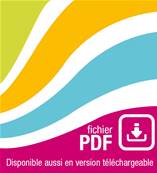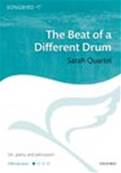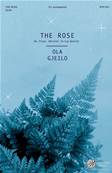| |  As mentioned in the title, the specificity of this work is the creation of the tonic note F surrounded by an accompaniment and a second voice. The first (rhythmic) voice would be seen as a murmuring. Joy Kane graduated in music composition and theory from the Cleveland Institute of Music and an international Certificate of Jaques-Dalcroze rhythmic in NYC. She specialized in jazz in NYC with Barry Harris, Ran Blake and Johnny Mehegan. Moreover, she trained choreography at the Martha Graham School. She discovered a passion for the French culture during her numerous trainings in the festivals throughout France and left NYC in 1983 to live in Paris. She is a renowned trainer, especially for her Jaques-Dalcroze rhythmic ateliers, improvisation ateliers (voice and keyboard of any kind) and vocal technique. As a composer Joy Kane has already composed hundreds of singings and vocal and choral works. As mentioned in the title, the specificity of this work is the creation of the tonic note F surrounded by an accompaniment and a second voice. The first (rhythmic) voice would be seen as a murmuring. Joy Kane graduated in music composition and theory from the Cleveland Institute of Music and an international Certificate of Jaques-Dalcroze rhythmic in NYC. She specialized in jazz in NYC with Barry Harris, Ran Blake and Johnny Mehegan. Moreover, she trained choreography at the Martha Graham School. She discovered a passion for the French culture during her numerous trainings in the festivals throughout France and left NYC in 1983 to live in Paris. She is a renowned trainer, especially for her Jaques-Dalcroze rhythmic ateliers, improvisation ateliers (voice and keyboard of any kind) and vocal technique. As a composer Joy Kane has already composed hundreds of singings and vocal and choral works.
|
| | | 
This original composition sets the composer's own text celebrating freedom of expression and the music within each of us. Accompanied by hand-drum and piano, the piece is an exciting and engaging sing filled with teachable moments and opportunities for musical growth, with simple legato and two-part passages, and vocal percussion.
Also available in a version for CBar, piano, and percussion, which is fully compatible with this upper-voice version.
|
| | | 
A flowing piano accompaniment and a melody that captures the mystery of this beautiful Rossetti text.
From Ola Gjeilo's album Winter Songs.
Can be performed with piano only or with piano and string quartet.
Version for SA choir.
Minimum delivery time 2 to 3 weeks.
|
| | | 
This song is one of the most famous of Claude Nougaro. It was firstly entitled “Ô Toulouse” (April 1967). The singer pays an important and personal tribute to his home town, Toulouse. He had a complicated youth, and he decided to write this song at a “pretty complicated” moment of his life. He wrote the first version of the song when he was living in the avenue des Ternes, Paris, and lyrics were pretty tough. By talking to Odette, his second wife, he decided to transform this song into a “chant d’amour et non un chant de rancune” (“love song and not a resentful song anymore”), his wife said. Material culture as well as intangible culture inspired him the text, and he used Occitan lyrics from “La Toulousaine” which was written by Lucien Mengaud in 1845: “Ô moun païs! Ô moun païs! Ô Tolosa! Tolosa.” When the CD was released, it didn’t immediately meet with success but between 1970s and 19780s, it became famous. Then, both the singer and the song became the symbol of “La Ville Rose” (The Pink City) and became even an unofficial anthem for Toulouse as well as a strong identity symbol of “La cité gasconne” (Gascon City). It is often played for rugby meet in Toulousian Stadium. When Claude Nougaro died in 2004, his song was played to the bells of Basilica of Saint-Sernin, Toulouse, for his funerals. Lyrics of that song are engraved on a plate placed on the Quais de la Garonne (Quays of the Garonne).
|
|
|